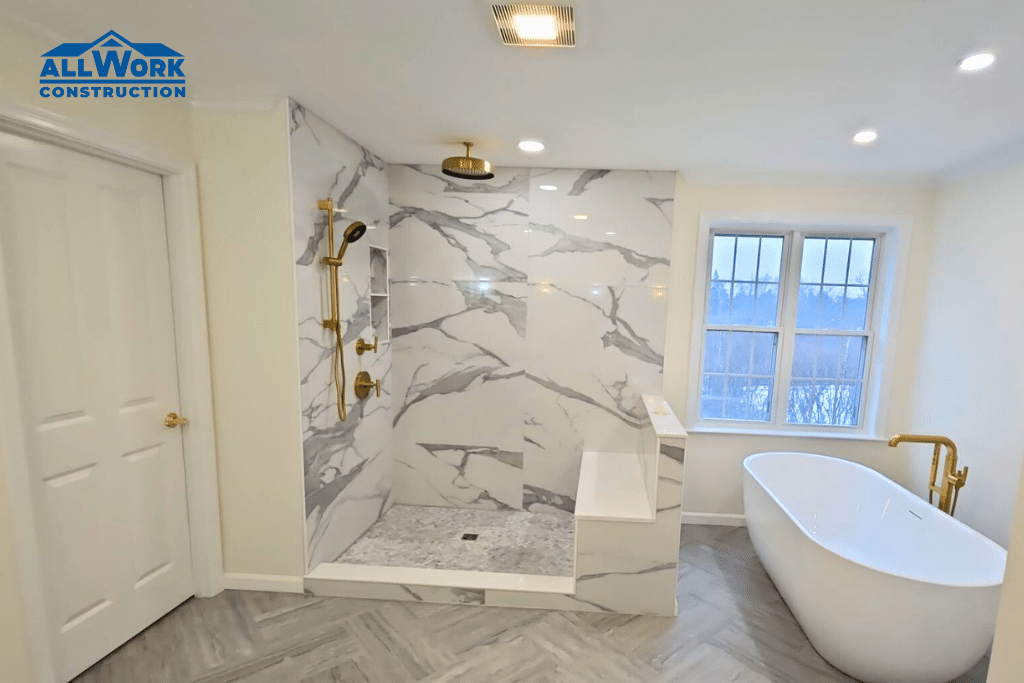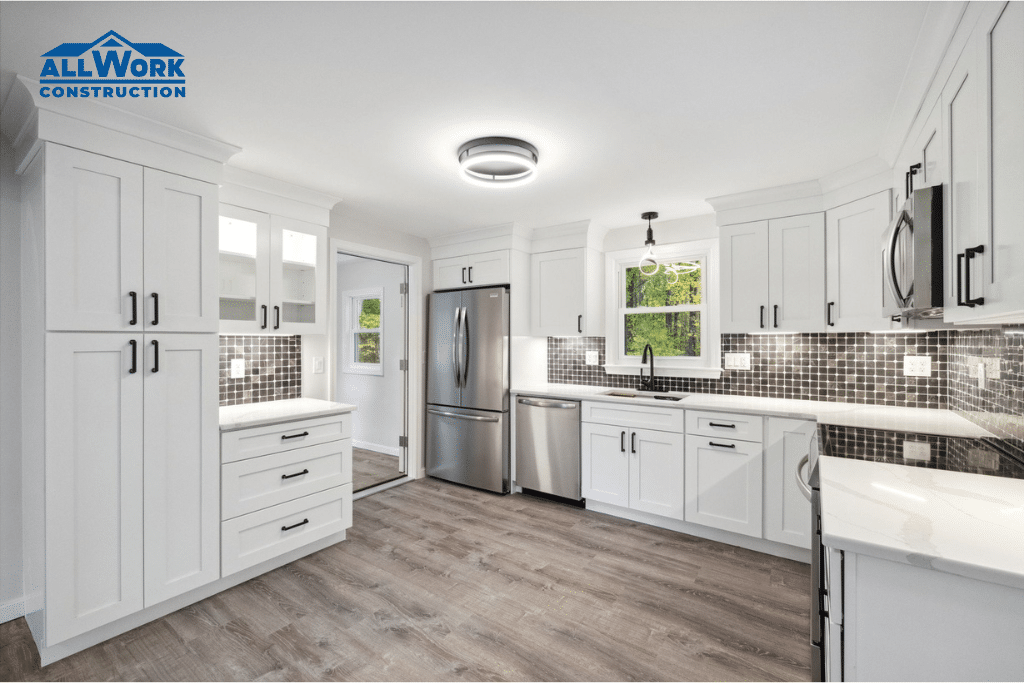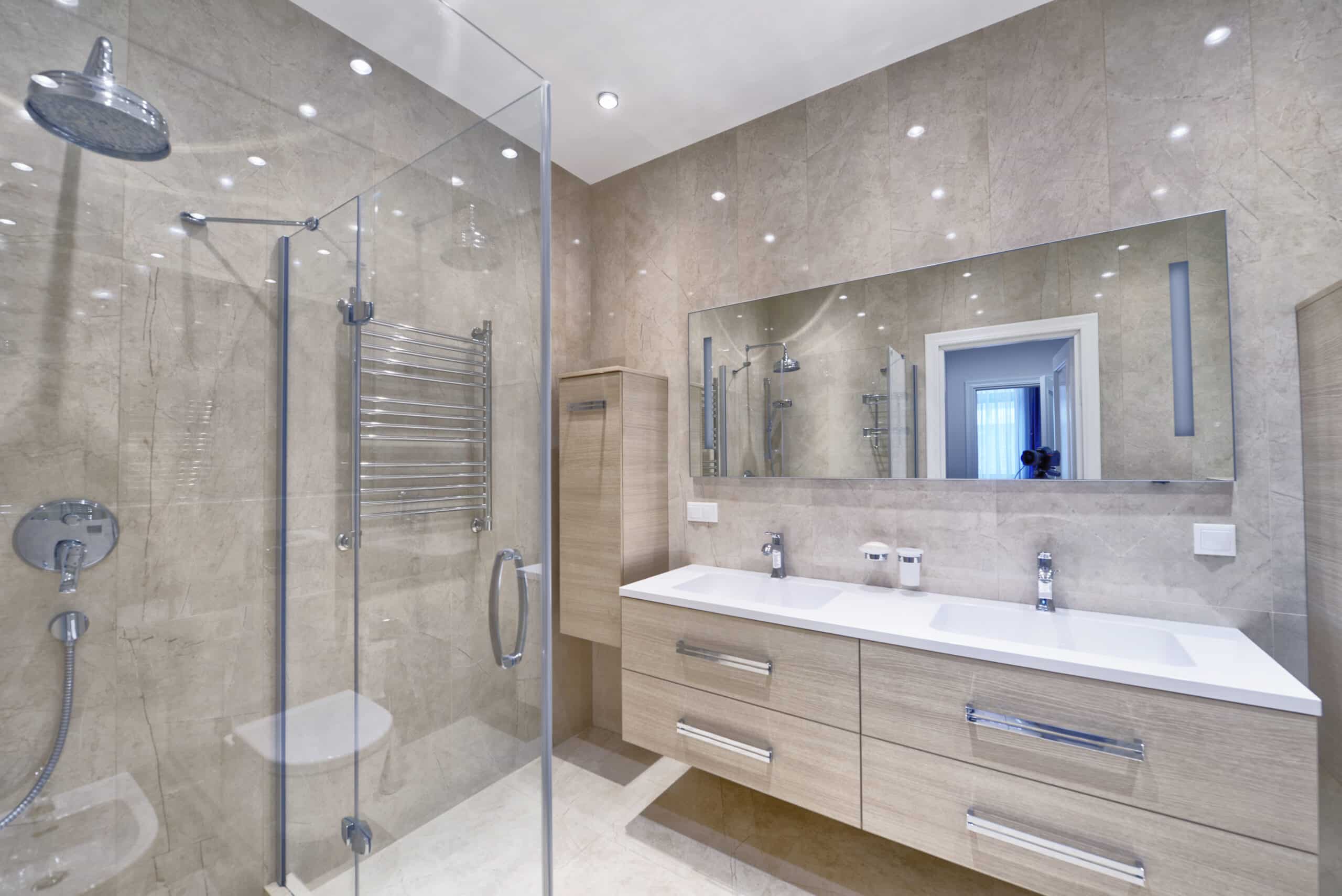When it comes to kitchen remodeling, lighting often takes a backseat to more tangible elements like cabinets, countertops, and appliances. However, overlooking the importance of proper lighting design can dim the potential of your kitchen transformation. That’s why this month, your local remodelers from All Work Construction are discussing the significance of lighting in creating a functional and inviting kitchen space, exploring different types of lighting fixtures and placement strategies to brighten up your culinary haven.
Why Lighting Matters
Lighting serves as the unsung hero of kitchen design, playing a crucial role in enhancing both functionality and aesthetics. Proper lighting can:
Improve Visibility
Adequate lighting is essential for performing tasks like food preparation, cooking, and cleaning with ease and precision. Dim or shadowy areas can make these tasks challenging and potentially hazardous.
Enhance Ambiance
Lighting sets the mood and ambiance of your kitchen, whether you’re hosting a lively dinner party or enjoying a quiet breakfast with your family. The right lighting can create a warm and welcoming atmosphere that encourages relaxation and socialization.
Highlight Design Features
Thoughtfully placed lighting fixtures can accentuate architectural details, focal points, and decorative elements in your kitchen, adding visual interest and depth to the space.
Increase Safety
Well-lit kitchens reduce the risk of accidents and injuries by illuminating potential hazards such as sharp utensils, spills, and slippery floors. Proper lighting also enhances visibility for older adults and individuals with visual impairments.
Key Types of Lighting Fixtures and Placement Strategies to Brighten Up Your Space
Task Lighting
Task lighting is essential for illuminating specific work areas where tasks such as chopping vegetables, reading recipes, and cooking take place. Common types of task lighting fixtures include under-cabinet lights, recessed downlights, and pendant lights positioned over kitchen islands or countertops. These fixtures should provide bright, focused light without casting harsh shadows.
Ambient Lighting
Ambient lighting, also known as general lighting, serves as the primary source of illumination in the kitchen, filling the entire space with uniform light. Ceiling-mounted fixtures such as flush mounts, semi-flush mounts, and chandeliers are popular choices for ambient lighting. Consider dimmable fixtures to adjust the light intensity according to different activities and occasions.
Accent Lighting
Accent lighting adds drama and visual interest by highlighting architectural features, decorative elements, and artwork in the kitchen. Wall sconces, track lights, and LED strip lights are versatile options for accent lighting. Use them to draw attention to features like cabinet displays, open shelves, and statement backsplashes, creating a layered lighting effect.
Natural Lighting
Natural light can transform your kitchen, making it feel brighter, more spacious, and connected to the outdoors. Maximize natural light by strategically placing windows, skylights, and glass doors to harness sunlight throughout the day. Consider using light-filtering window treatments to control glare and maintain privacy while allowing natural light to flood the space.
All Work Construction | Kitchen Remodelers
Considering a kitchen remodel? Give our remodelers a call today to schedule a consultation! To discover our additional services, check out our website or contact our team for more information.




